
When you think of a log or timber home, you probably picture a lot of right angles, from the trusses overhead to the notched corners on the exterior. Big, long timbers do lend themselves to these sharp shapes, whether stacked horizontally or interlocked perpendicularly. But the beauty of log and timber (and importantly, hybrid) construction is, if you think creatively, almost anything is possible.
“As soon as you take the log and you turn it vertically and you start using log columns for a structure, the design possibilities are endless,” says Murray Arnott, a log home design specialist who has a long history creating round post-and-beam structures. “I think the key is that it opens up myriad opportunities, including curved walls, circles, turrets, all of these kinds of aesthetic or architectural features.” That includes homes that are entirely round.
From indigenous dwellings to ancient castles to Victorian houses, humans gravitate to round design, whether we realize it or not. “There’s an attraction for people to this round shape. Even castles or Victorian homes — people would build these homes and then stick a round turret on the end of it,” says Murray. “People are drawn to the circle for reasons of safety and comfort and possibly spiritual connection. It has a feeling of completeness, unity, harmony. All of those things draw people to the circular shape.”
For some modern homeowners, like Murray’s first client to seek out a round design decades ago, it’s about capturing an organic feel. For others, it’s all about the view.
“I think construction like this lends itself to hilltops where views are 360 degrees,” explains Steve Hall, the vice president of sales, marketing and special projects at Hearthstone Homes. “You can take advantage of all sides.”
That being said, there’s a reason traditional design tends to take rectangular forms. Round footprints have tricky implications for the foundation, interior layout and ultimately, the cost.
“The extra challenge really relates to the foundation design. Otherwise, with precision factory CNC, we have the ability to fabricate with little tolerances,” says Steve, adding that a skilled general contractor and crew is another essential for complicated builds like these. (“The GC in the field does not have that capability. He is at the mercy of a skilled crew.”)
Murray notes that another hurdle is the effect a round footprint has on the interior. “It is much more challenging to design traditional rooms within round spaces, but you can do it,” he explains. “You need more floor space to accomplish the same functional needs if you’re using a round shape, particularly if you’re trying to fit your whole home into it. So, you are going to have to add some additional floor area to make your rooms work in a way that doesn’t feel compromised, due to the weird [or total lack of] corners.”
When it comes to the price tag, overcoming these challenges and the customization a round design calls for is not without cost.
“You’re simply going to add cost to it,” Murray states. “But, the solution for that is: just add [round features] in a couple places. So now instead of adding 30 percent to our budget, we’re adding 5 percent to our budget because we’re only doing [round design] in a turret or we’re only doing it in the great room. The key is to think hybrid or to think about incorporating it in such a way that’s going to get that wow factor without blowing your budget.”
Luckily, if you’re not ready to go all the way ’round just yet, log and timber construction lends itself to creative combinations: “Start with just a large circular center section,” suggests Steve. “And then build conventional/square shed or gabled sections on either or both sides.”
Other places to consider? A round bar, a circular fireplace or a set of spiral stairs are Murray’s suggestions. “Start breaking your design down into the functional and the more aesthetic areas of house,” he advises.
Ready to see these ideas at work? Check out the following floor plans to see how to close the loop on your round-house design:
The Carousel by Murray Arnott
Photo by J K Lawrence
Square Footage: 4,500
Bedrooms: 1
Bathrooms: 2 full, 1 half
While this plan is not technically a full circle, it does place emphasis on having as many rounded spaces as possible. Built using big logs in a post-and-beam construction style, the home showcases Murray’s advice for round homes: “Use a combination of rectangles and octagons or hexagons so that the functional rooms in your house — the bathroom, the bedrooms, the closets, the utility spaces — all get put within rectangular forms, and then your primary bedroom, your dining room, your great room, all of those spaces, can be within more circular rooms because they’re not as constrained.”
The Lockwood Home by Hearthstone Homes
Photo by James Ray Spahn
Square Footage: 6,622
Bedrooms: 3
Bathrooms: 3 full, 1 half
This South Dakota hybrid home, designed by Hearthstone Homes, revolves around a grand circular fireplace that practically floats in the center. The entertaining spaces — the kitchen, dining room, great room and a dramatic entry — encircle the fireplace while the family room and primary bedroom, in addition to a downstairs sitting room, take a more traditional rectangular form. Above the floating fireplace, an intricate network of timbers provides support for the uninterrupted 43-by-43-foot octagonal space.
The Gull Rock by True North Log Homes
Photo courtesy of True North Log Homes
Square Footage: 2,399
Bedrooms: 1 to 2
Bathrooms: 1 full, 1 half
If you’re still warming up to the idea of round design, the Gull Rock by True North Log Homes lets you try it on for size in two rooms with the most to benefit from a circle’s coziness: the breakfast nook and an upstairs reading nook. Between the open-concept layout, sprawling deck and octagonal rooms (a True North hallmark) this plan has an open feel with organic “flow” between spaces that makes it perfect for entertaining. It’d be right at home on the water, in the mountains or among the trees in a peaceful forest.
‘Round and ‘Round
Not ready to commit to a round room or two, much less your whole home? The otherwise simple staircase is the perfect place to dip your toes into circular design. Take these spiral stunners for example:
Wind it Up By Pioneer Log Homes of British Columbia
It’s no surprise to all who enter this Colorado home that the owners are passionate about wood. Built with giant Western red cedar logs from British Columbia, the beauty of big timbers is on full display. This is especially true in the entry, where spiral stairs frame up a 53-foot-tall log post.
Joe Hilliard photo




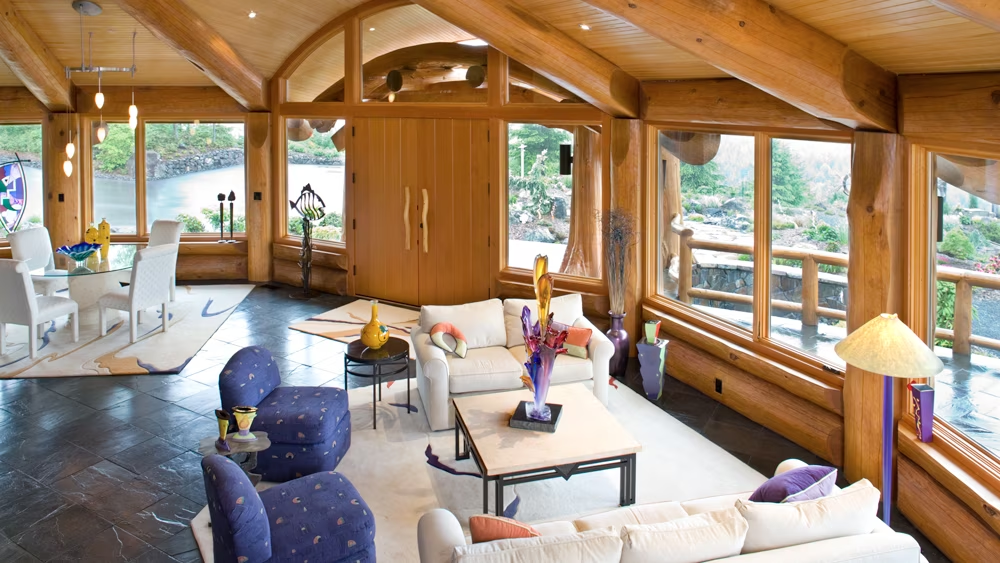
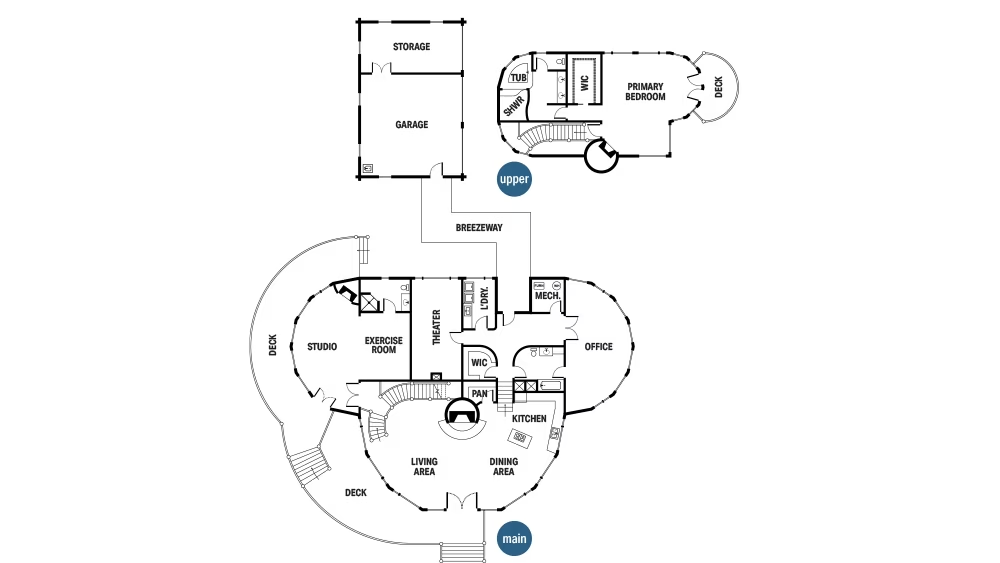
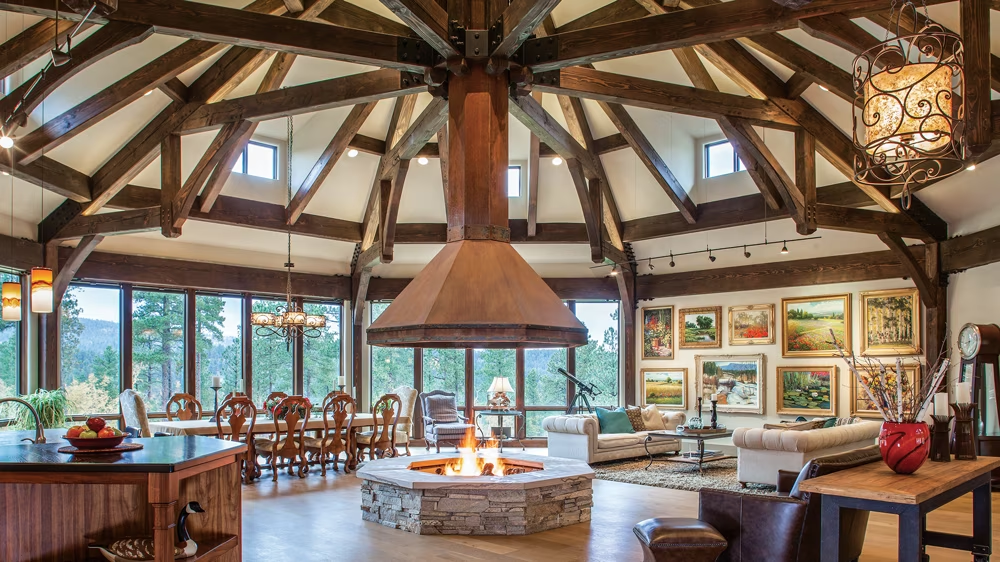
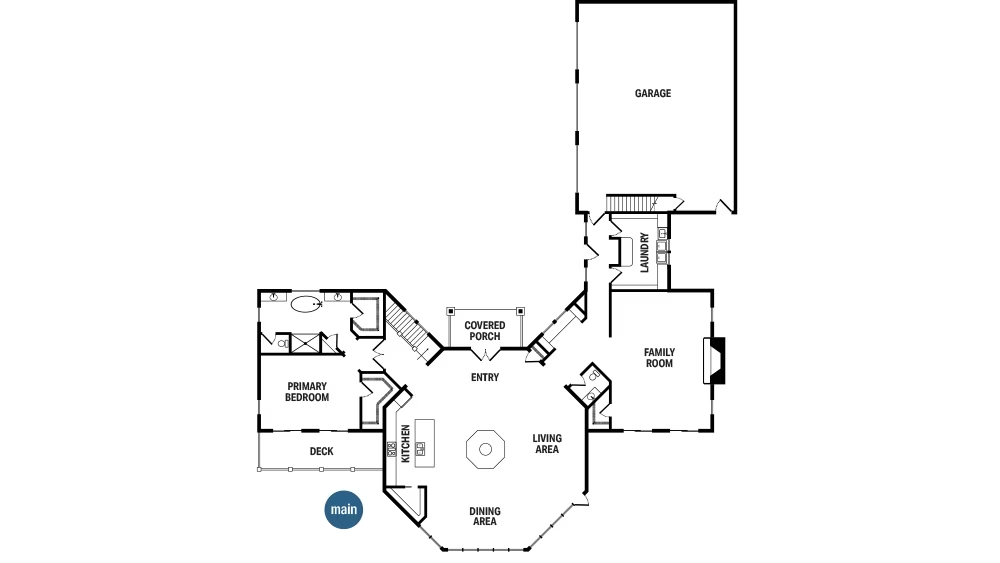
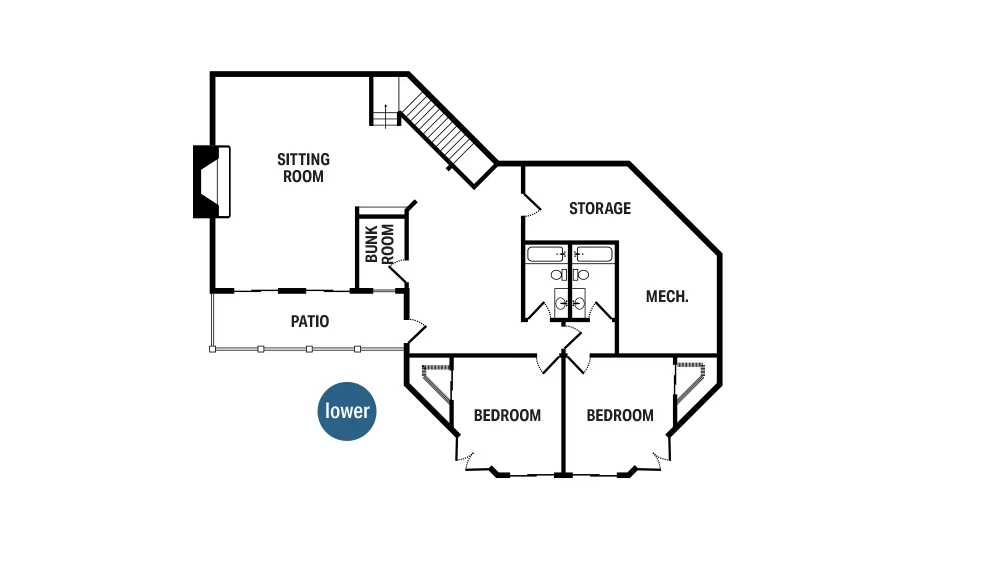
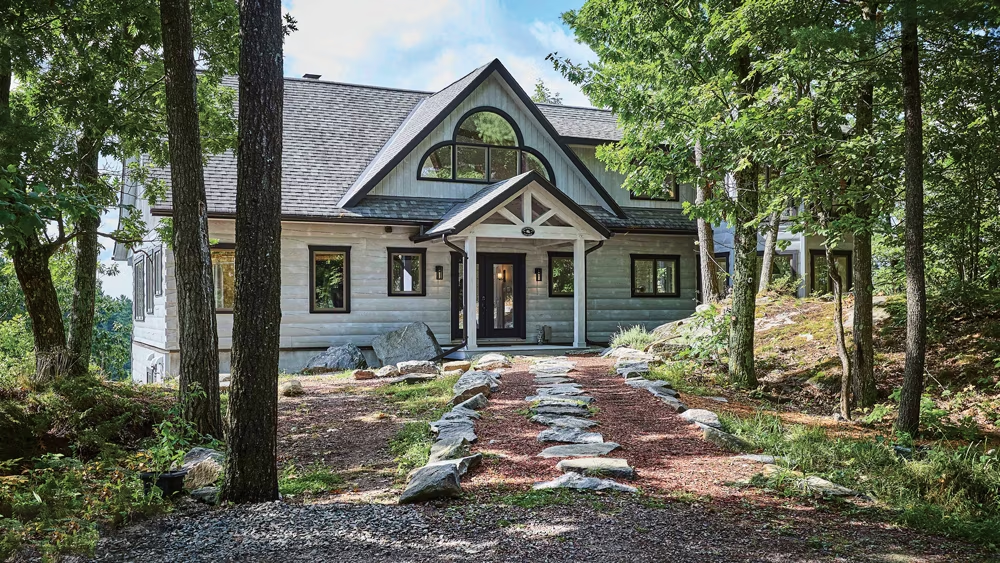
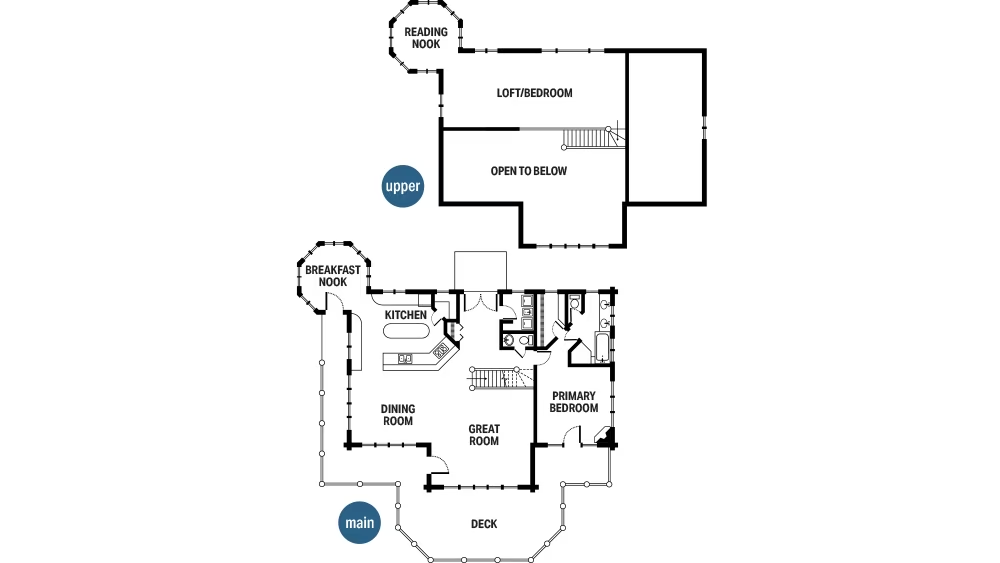
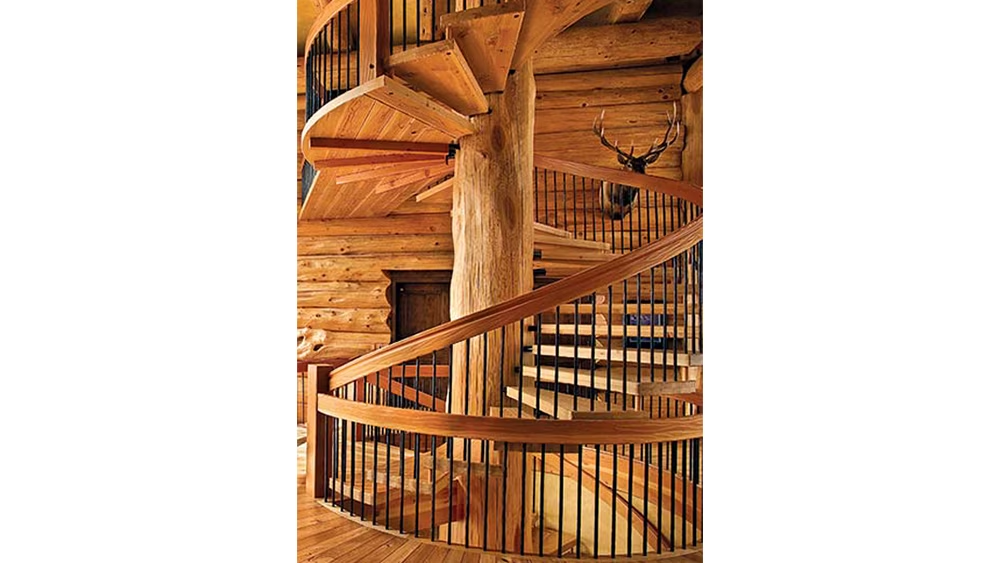
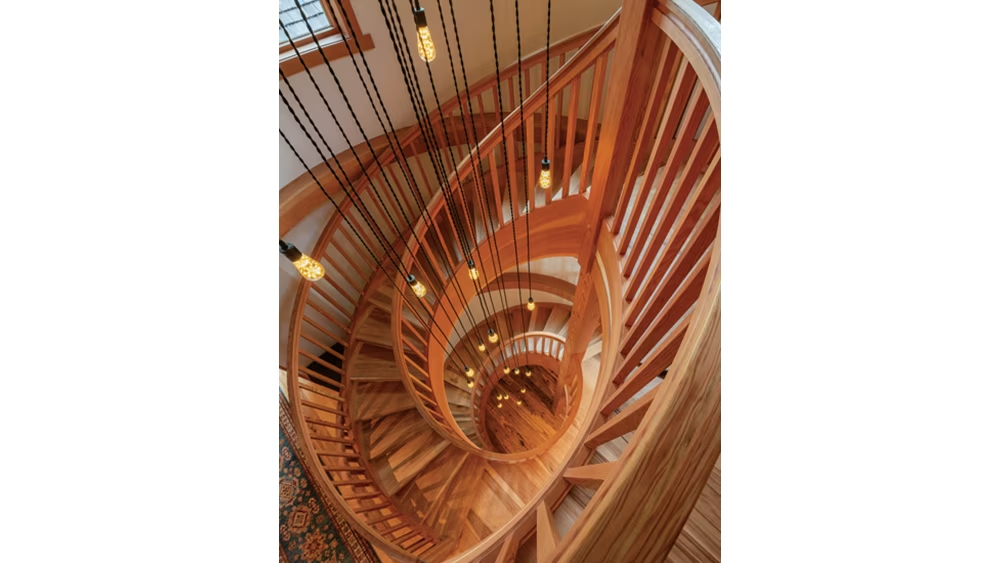
-horizontal_11868_2024-03-12_10-15-1280x720.avif)







